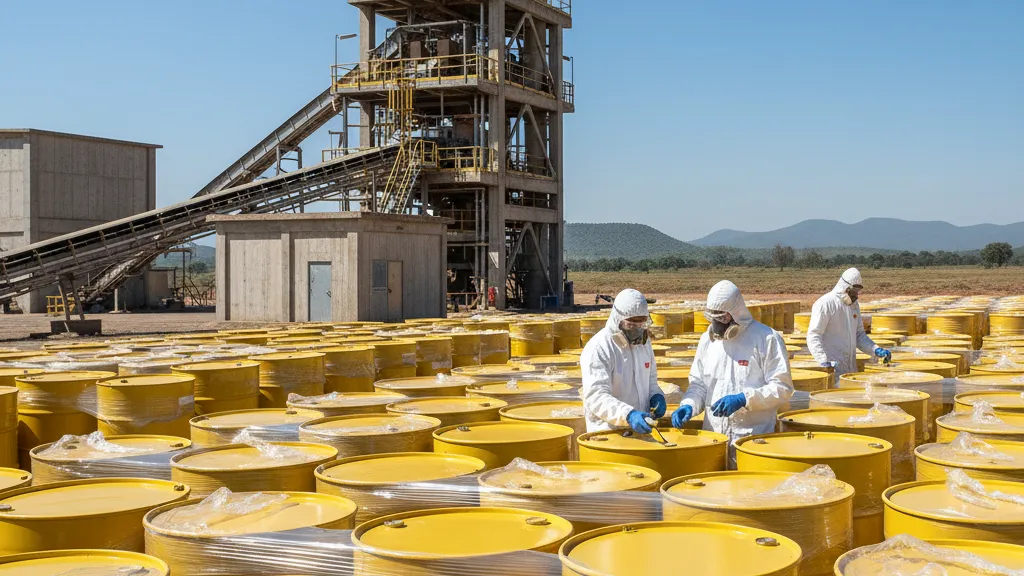Lotus Resources Produces First Uranium at Malawi’s Kayelekera Mine

Lotus Resources produces first uranium at Malawi’s Kayelekera Mine, marking its shift to producer status amid rising global nuclear fuel demand.
Lotus Resources Limited has reached a pivotal milestone with the first production of yellowcake uranium from its Kayelekera Mine in Malawi, marking the company’s successful transition from project developer to uranium producer. The achievement, completed on schedule and within budget, positions Lotus as a key player in the global uranium market at a time when prices are surging amid tightening supply and renewed demand for clean, reliable nuclear energy. This development underscores the company’s operational readiness and strategic foresight in revitalizing one of southern Africa’s most significant uranium assets.
During the September 2025 quarter, Lotus successfully produced its first batch of yellowcake, signaling the completion and commissioning of the Kayelekera processing plant. Ramp-up to steady-state production is now underway, with full mining operations scheduled to begin in the fourth quarter of 2025 and commercial-scale output expected by the first quarter of 2026. The ongoing refurbishment of the site’s acid plant is progressing as planned and is due for completion in early 2026. Once operational, this facility will further improve process efficiency, especially under the newly confirmed low-acid flowsheet developed by the Australian Nuclear Science and Technology Organisation (ANSTO), which reduces acid consumption by approximately 70 percent without sacrificing uranium recovery.
Lotus is also advancing sustainability initiatives aimed at reducing environmental impact and improving energy efficiency. The company plans to connect Kayelekera to Malawi’s national power grid by the end of 2026, a move expected to significantly cut diesel usage and associated carbon emissions. Meanwhile, safety and community relations remain strong, with zero lost-time injuries recorded during the quarter and continued engagement with local stakeholders around the Kayelekera site. These achievements demonstrate Lotus’s commitment to responsible and inclusive operations.
In addition to the restart of Kayelekera, the company is making steady progress on its Letlhakane Uranium Project in Botswana, where a 12,000-metre reverse circulation (RC) and 1,500-metre diamond drilling campaign is underway. Results from this exploration phase will feed into a Pre-Feasibility Study (PFS) targeted for completion by late 2026, potentially establishing Letlhakane as Lotus’s next growth asset. Financially, the company remains well-capitalized, holding A$96.7 million in cash, bolstered by a recent A$65 million equity raise and a US$8.5 million equipment finance facility to support ongoing expansion.
The start of production at Kayelekera marks a new chapter not only for Lotus Resources but also for Malawi’s re-emerging uranium sector. As the global energy transition accelerates and nuclear energy gains renewed prominence in decarbonization strategies, Lotus is strategically positioned to supply critical uranium resources to the international market. The combination of strong operational performance, innovative low-acid processing, and responsible development places the company among southern Africa’s most promising uranium producers.
Mini-Glossary
- Yellowcake: A concentrated uranium oxide powder (U₃O₈) produced during the uranium extraction process, used as a feedstock for nuclear fuel.
- ANSTO: Australian Nuclear Science and Technology Organisation, a government body specializing in nuclear research and technology development.
- Flowsheet: A diagram or process design outlining the steps and chemical reactions used to extract and process minerals.
- Low-Acid Processing: A metallurgical approach that minimizes acid use in ore leaching, reducing environmental and cost impacts.
- RC (Reverse Circulation) Drilling: A drilling technique used to collect rock samples quickly for geological analysis.
- Pre-Feasibility Study (PFS): A detailed technical and economic evaluation conducted before full project feasibility studies.
- Lost-Time Injury (LTI): A work-related incident resulting in at least one missed work shift.
